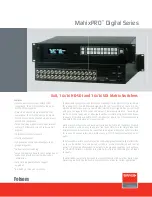
1-3
z
Divide the extended IP address into 3 sections with 4 digits in each section to get the system ID
1680.1000.1001.
There are other methods to define a system ID. The principle is to make sure it can uniquely identify a
host or router.
4) SEL
The NSAP Selector (SEL), or the N-SEL, is similar to the protocol identifier in IP. Different transport
layer protocols correspond to different SELs. All SELs in IP are 00.
NET
A network entity title (NET) indicates the network layer information of an IS and does not include
transport layer information. It is a special NSAP address with the SEL being 0. Therefore, the length of
the NET is equal to the NSAP and is in the range 8 bytes to 20 bytes.
Generally, a router only needs one NET, but it can have three NETs at most for smooth area merging
and partitioning. When you configure multiple NETs, make sure their system IDs are the same.
For example, a NET is ab.cdef.1234.5678.9abc.00, where,
Area = ab.cdef, System ID = 1234.5678.9abc, and SEL = 00.
IS-IS Area
Two-level hierarchy
IS-IS has a two-level hierarchy to support large scale networks. A large scale routing domain is divided
into multiple Areas. Typically, a Level-1 router is deployed within an area, a Level-2 router is deployed
between areas, and a Level-1-2 router is deployed between Level-1 and Level-2 routers.
Level-1 and Level-2
1) Level-1
router
A Level-1 router establishes neighbor relationships with Level-1 and Level-1-2 routers in the same area.
The LSDB maintained by the Level-1 router contains the local area routing information. It directs the
packets destined for an outside area to the nearest Level-1-2 router.
2) Level-2
router
A Level-2 router establishes neighbor relationships with the Level-2 and Level-1-2 routers in the same
or in different areas. It maintains a Level-2 LSDB which contains inter-area routing information. All the
Level-2 and Level-1-2 routers must be contiguous to form the backbone of a routing domain.
3) Level-1-2
router
A router with both Level-1 and Level-2 router functions is a Level-1-2 router. It can establish Level-1
neighbor relationships with the Level-1 and Level-1-2 routers in the same area, or establish Level-2
neighbor relationships with the Level-2 and Level-1-2 routers in different areas. A Level-1 router must
be connected to other areas through a Level-1-2 router. The Level-1-2 router maintains two LSDBs,
where the Level-1 LSDB is for routing within the area, and the Level-2 LSDB is for routing between
areas.
















































